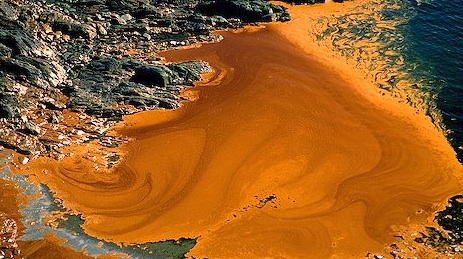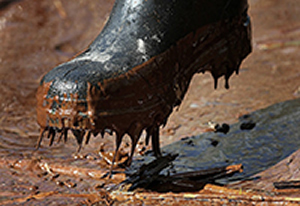

 Oil spills are events that occur when oil escapes and accidentally pours out in unprecedented volumes offshore, onshore, and in the arctic. Human error, force majeure, accidents, sabotage, lightering operations (the transfer of cargo from one oil tanker to another), poorly maintained pipelines, a tanker's state of disrepair, or acts of war, are all potential factors in a spill.
Oil spills are events that occur when oil escapes and accidentally pours out in unprecedented volumes offshore, onshore, and in the arctic. Human error, force majeure, accidents, sabotage, lightering operations (the transfer of cargo from one oil tanker to another), poorly maintained pipelines, a tanker's state of disrepair, or acts of war, are all potential factors in a spill.
For instance, a super tanker can accidentally encounter an iceberg, run aground in shallow waters, get caught in a storm in the high seas, hit a barrier reef, and explode. It can sustain a puncture, a massive hole on its hull can cause its cargo to pour out into the extended vicinity. A tanker may capsize or break apart in the wake of a storm and empty its cargo into the ocean. It can run into a minefield or get caught in the line of fire, sinking with its cargo into the ocean deep. Oil tanker collisions are commonly factors in massive oil spills.
In the case of the Deep Water Horizon catastrophe in Louisiana, a severed pipe caused unprecedented volumes of oil to spill from the well into the Gulf seas for months. Oil is buoyant. It is lighter than water and can float meters thick above sea level. It can ride the rising tide to the shore, waterways and inlets or flow to destinations dictated by wind drifts and hydrodynamic forces.
Escaped gas or hydrocarbons may also be derived from fissures in the ocean floor.
 Oil spills also occur onshore in the desert, mountains, forests and arctic regions where oil drilling or refining operations are an ongoing activity. Massive terrestrial oil spills may emanate from an undetected broken, punctured, dislocated and or disconnected pipe causing oil to seep and soak the soil resulting in tar sands. At times oil spilled drains deep into the aquifer causing contaminated water. It can find it’s way into fields, farmlands, and waterways causing changes in the ecosystem.
Oil spills also occur onshore in the desert, mountains, forests and arctic regions where oil drilling or refining operations are an ongoing activity. Massive terrestrial oil spills may emanate from an undetected broken, punctured, dislocated and or disconnected pipe causing oil to seep and soak the soil resulting in tar sands. At times oil spilled drains deep into the aquifer causing contaminated water. It can find it’s way into fields, farmlands, and waterways causing changes in the ecosystem.
Timeline for the restoration of the pH balance to support vegetation and life forms along shorelines, riverbanks, brooks, seas, oceans, forests, deserts, seabed, farmland and the tundra is 20 to 30 years.
![]()

![]()